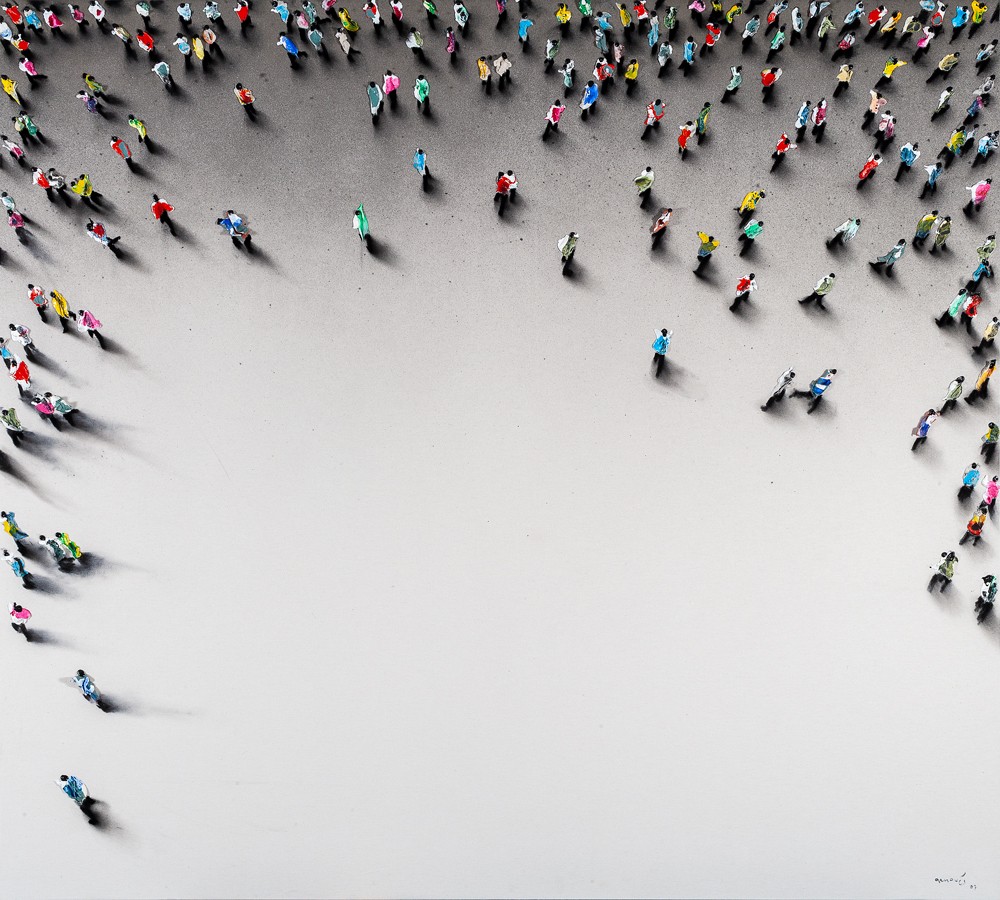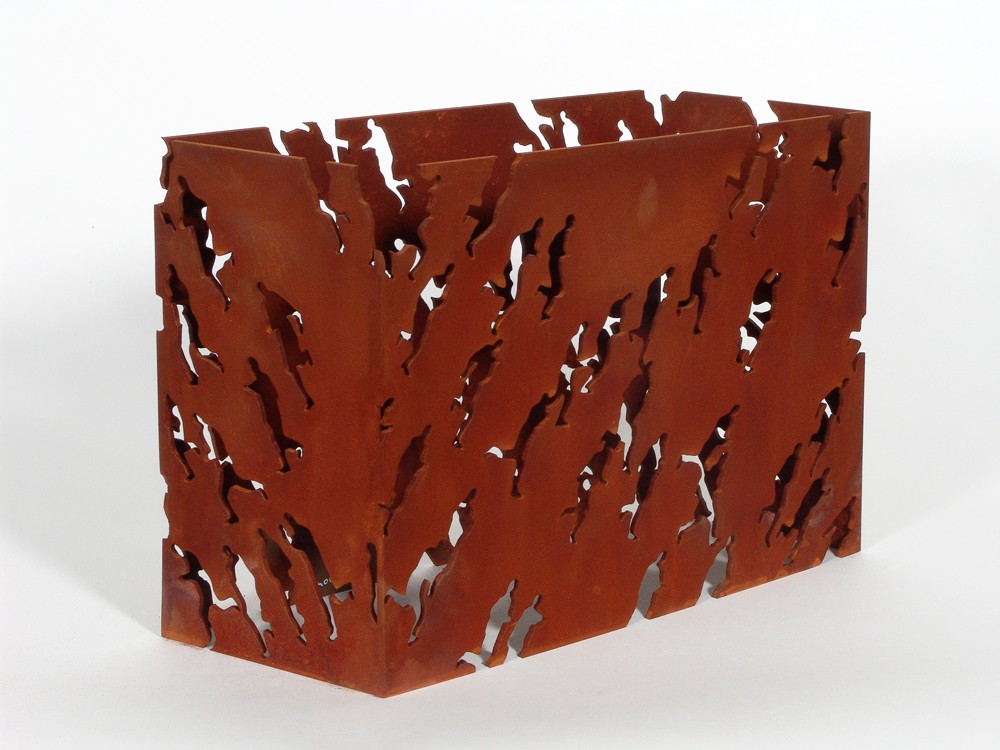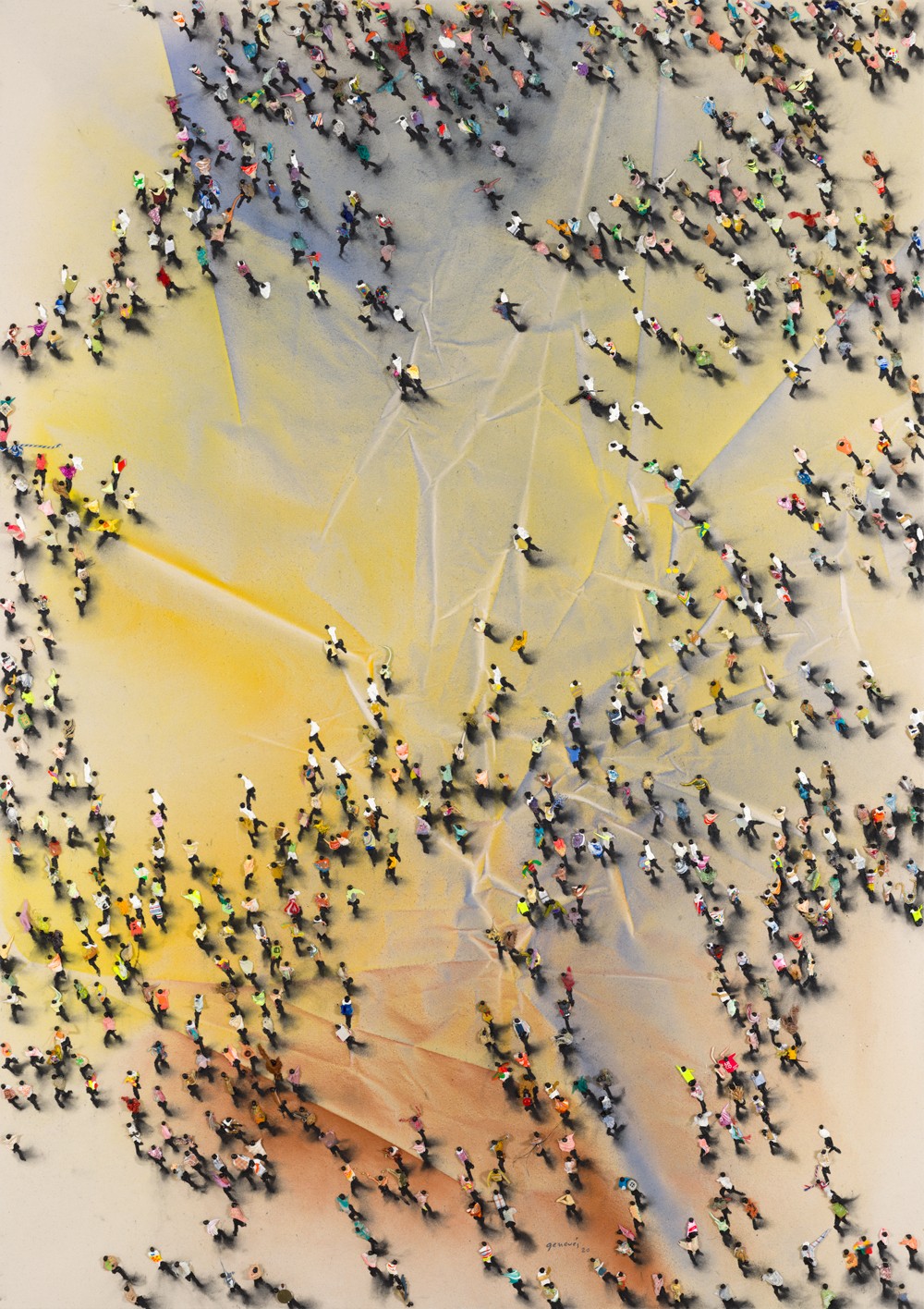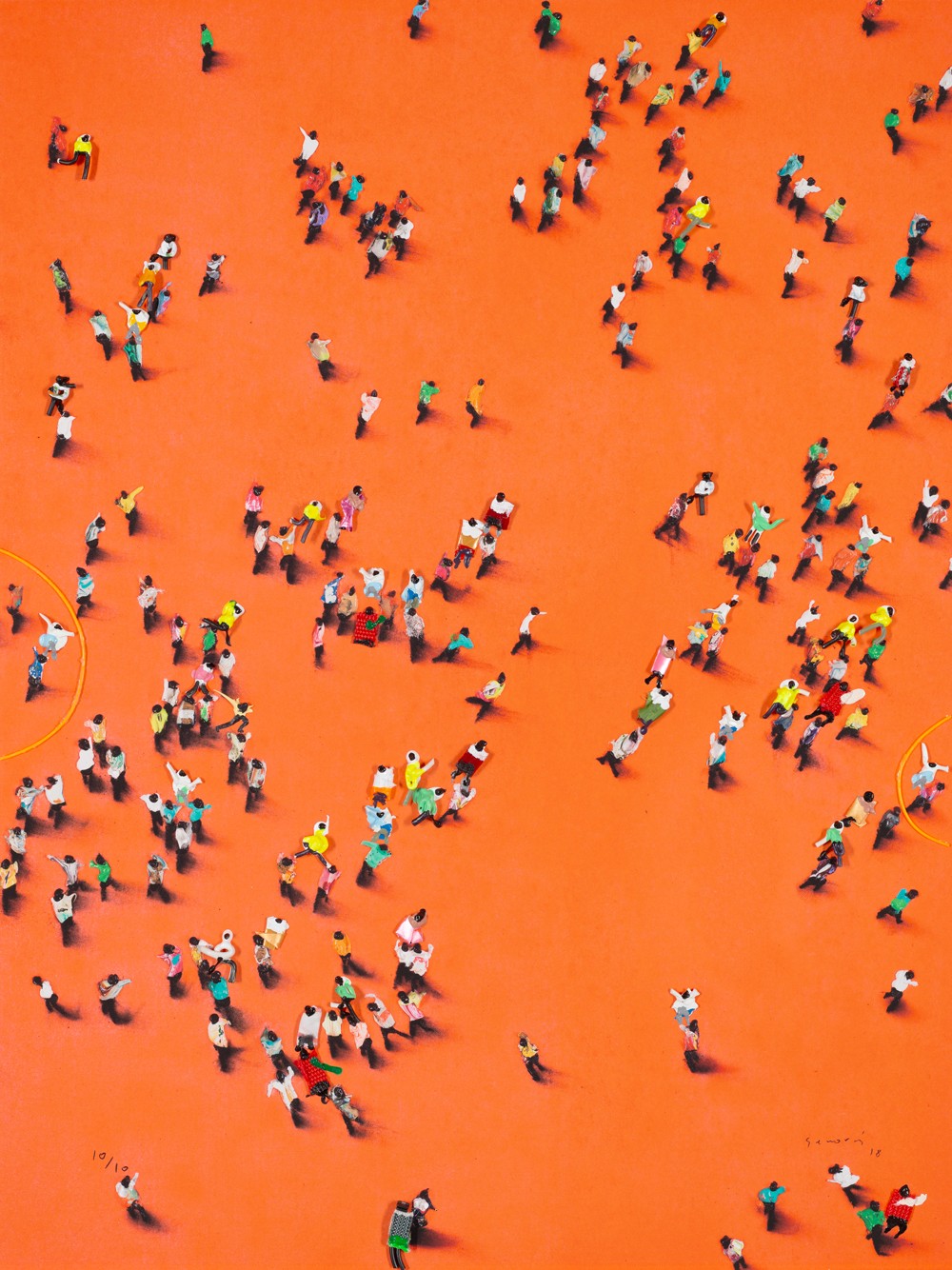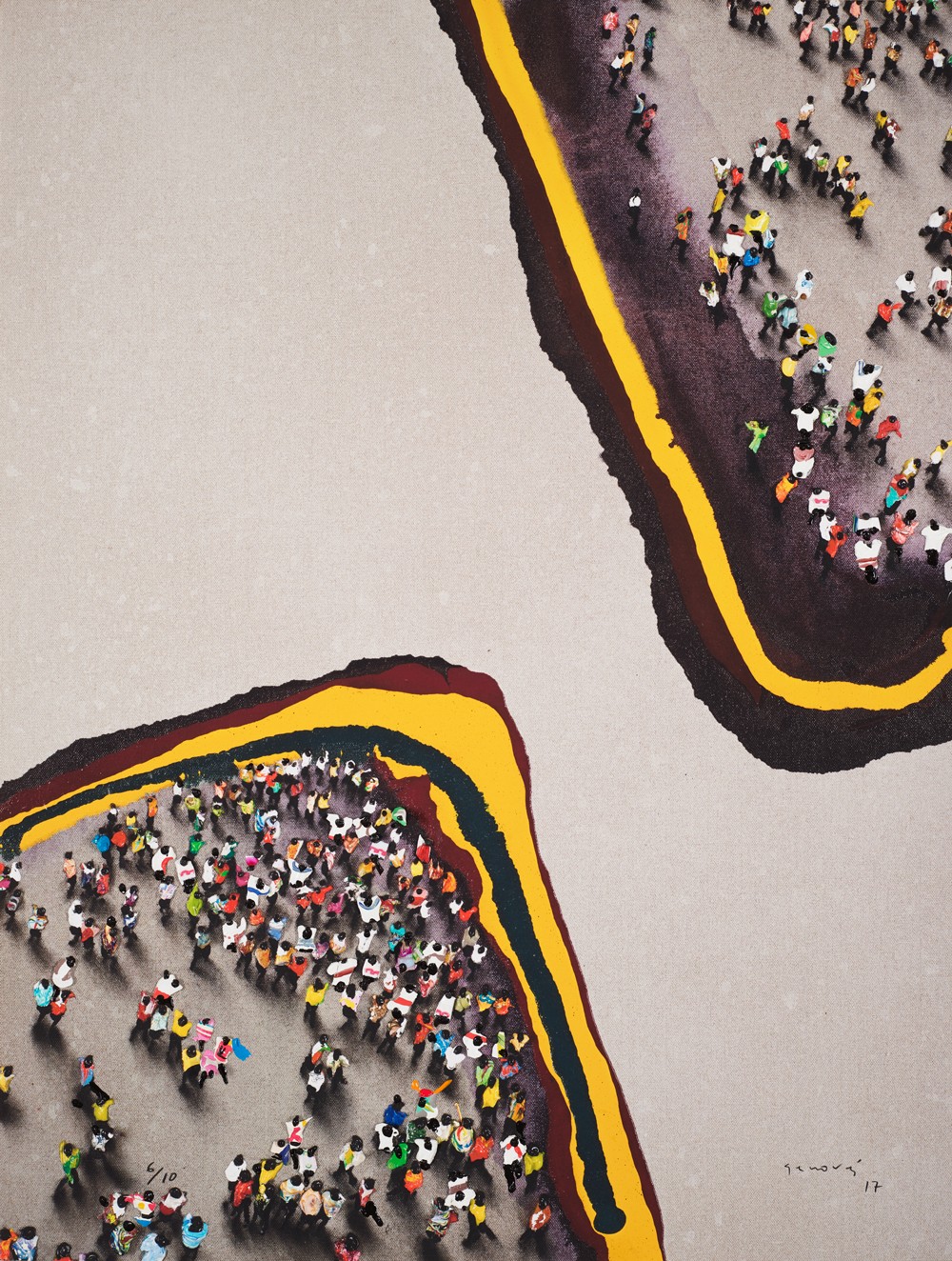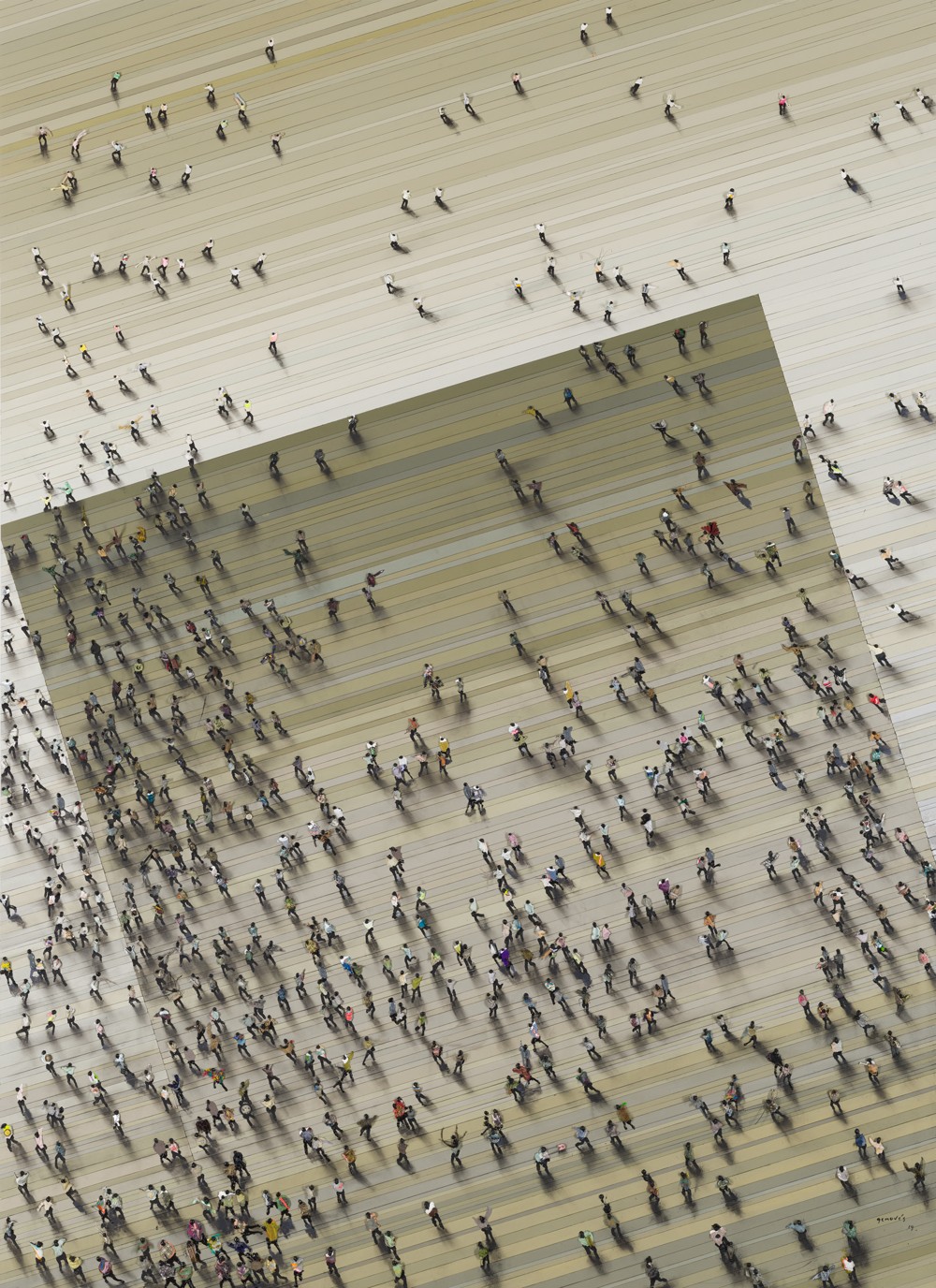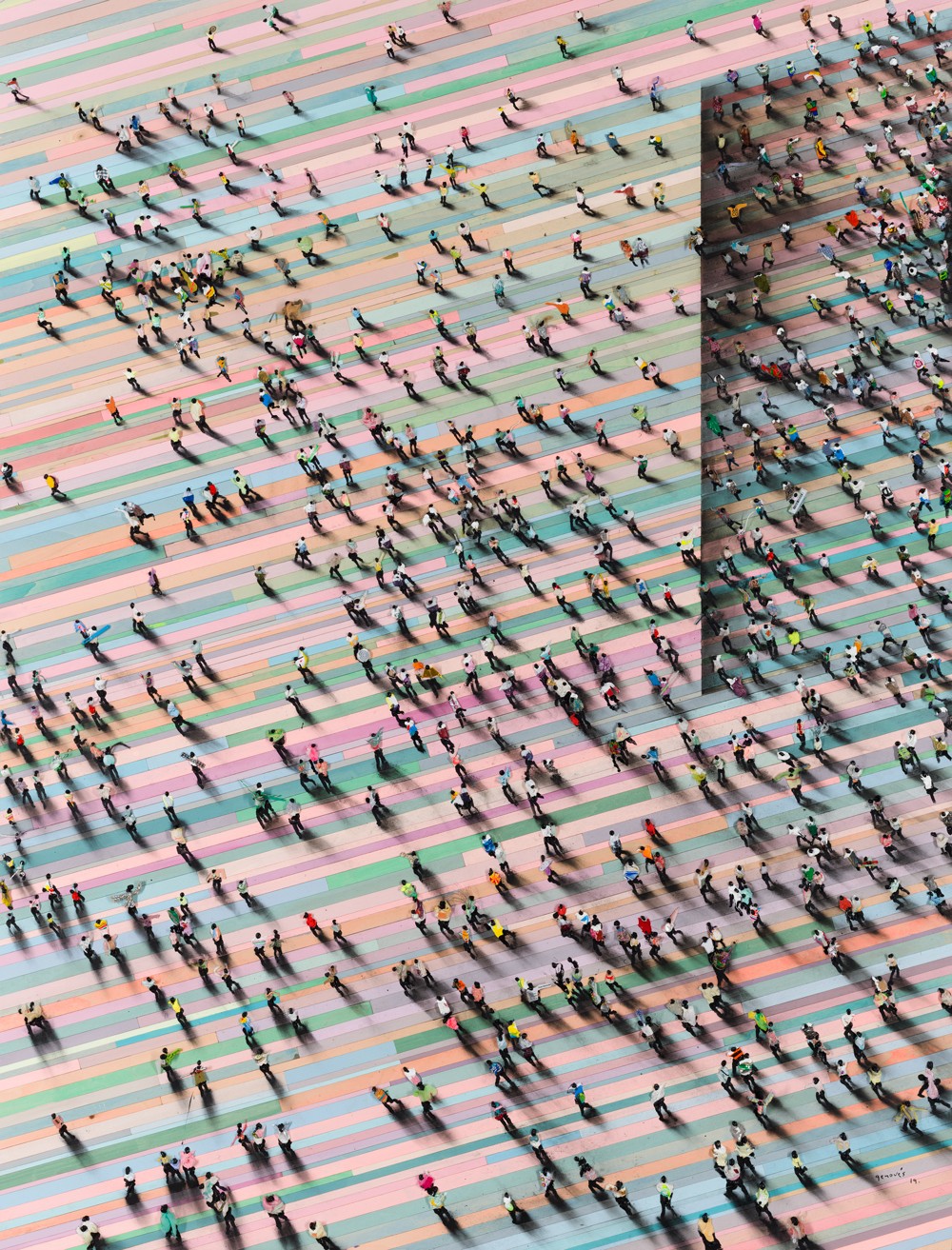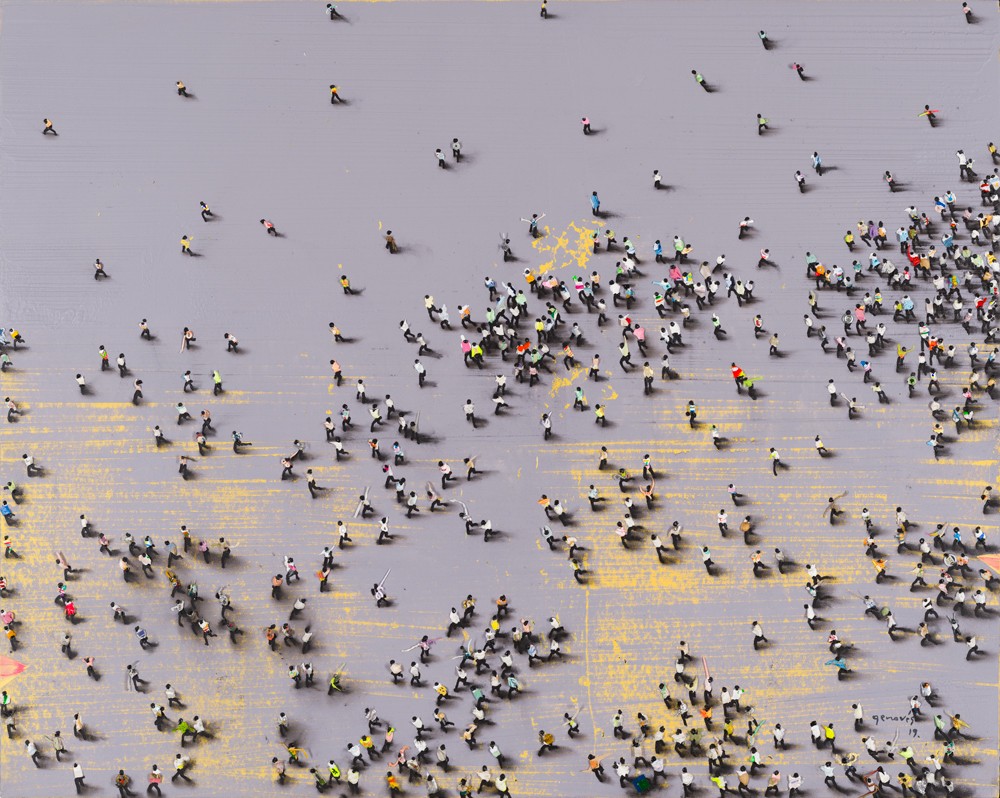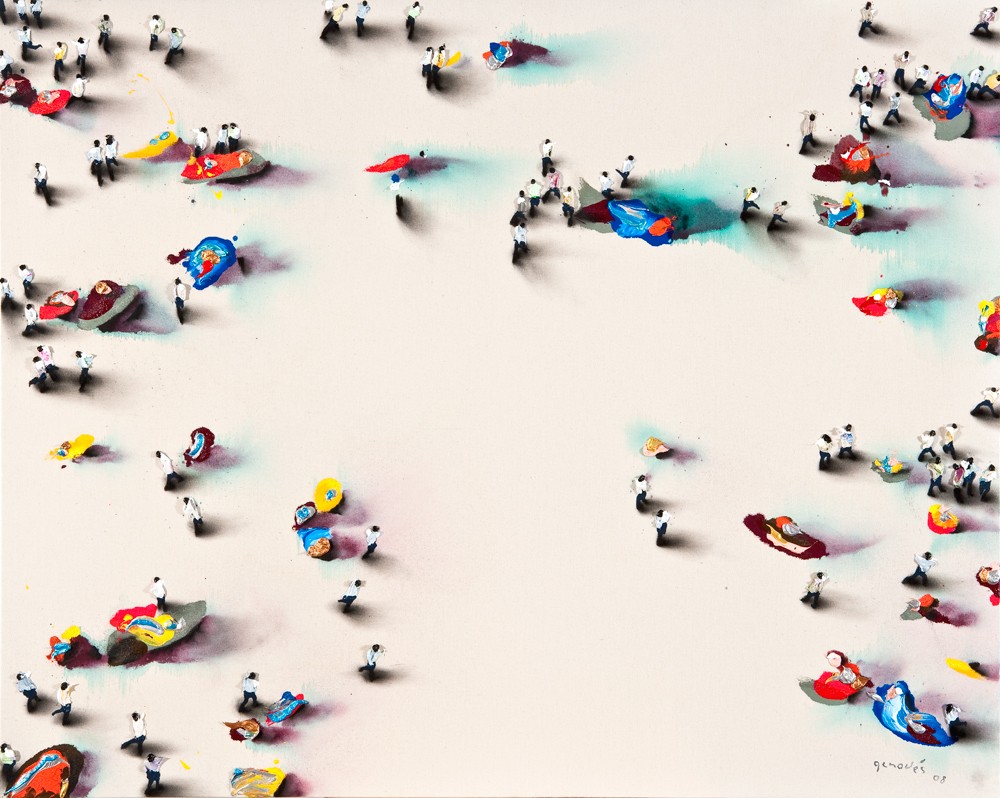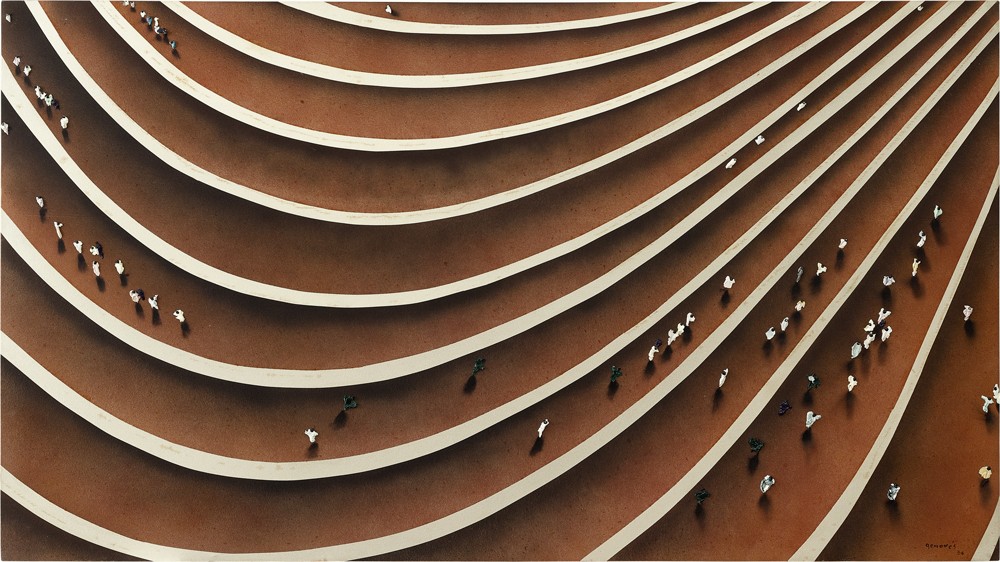The year 2023 marked a significant milestone in the international recognition of the Spanish artist Juan Genovés (1930-2020). Opera Gallery announced its representation of the estate of this emblematic figure in the modern history of his country, already acknowledged by the world’s leading artistic institutions. It is with immense pride, therefore, that we host the artist’s first solo exhibition in Paris, titled ‘Ágora’.
Juan Genovés and his art emerged under the oppressive yoke of the Franco dictatorship (1939-1975). Initially informal, the artist’s commitment to freedom led him to join significant groups in Spain’s post-war scene. In the 1960s, Genovés turned towards figurative art, developing an expressionist and provocative painting style, before moving towards collage in the following decade and embracing political realism.
Until the end of his life, Juan Genovés remained faithful to his political ideals. His deep commitment to democracy and social justice, and his opposition to the Franco regime, gave rise to the two main themes of his work: the individual and the crowd. The artist thus questions the mechanisms of dictatorship by opposing these two notions. The current ‘Ágora’ exhibition, is the continuation of a Genovés show staged in Singapore last November, and brings together some twenty works dating from 2006 to the artist's death in 2020, as well as a series of metal sculptures dating from 2004.
Genovés’ works, seemingly simple, almost abstract, hide a more complex reading. As one gets closer, each character is unique in attitude, with the use of real clothing and objects directly glued onto the canvas. The individual becomes myriad, evolving in a bird’s-eye, almost cinematic vision. A silent crowd, a dispersed crowd, locked in, kept at bay, projected as miniature shadows. In Genovés' hands, the human mass becomes an anonymous, recurring product of history. Power, persecution, resistance and displacement are some of the eternal themes of an œuvre that continues to move the viewer.
This exhibition showcases the humanist and poetic legacy that Juan Genovés leaves behind, as well as a message of universal significance. In his almost obsessive exploration of the vertigo of the human condition, Genovés also sought to transform art into an artist's commitment to society.
Juan Genovés
Vislumbre2017
Acrylic on canvas
Ø 200 cm | 78.7 in
Juan Genovés
Desplazamiento2007
Acrylic on canvas
180 x 200 cm | 70.9 x 78.7 in
Juan Genovés
Enrejados II2004
Rusty corten steel
35 x 51 x 16,5 cm | 13.8 x 20.1 x 6.5 in
Juan Genovés
Tapujos2018
Acrylic on board
120 x 160 cm | 47.2 x 63 in
Juan Genovés
Antecedentes2020
Acrylic on canvas
200 x 140 cm | 78.7 x 55.1 in
Juan Genovés
Ágora2018
Giclée on paper
74,5 x 56 cm | 29.3 x 22 in
Juan Genovés
Ahueque2017
Giclée on paper
74,5 x 56 cm | 29.3 x 22 in
Juan Genovés
Incisión2019
Acrylic on board
250 x 180 cm | 98.4 x 70.9 in
Juan Genovés
Canal2019
Acrylic on board
210 x 160 cm | 82.7 x 63 in
Juan Genovés
Hipótesis2019
Acrylic on canvas mounted on board
120 x 150 cm | 47.2 x 59.1 in
Juan Genovés
Pertrechos2008
Acrylic on canvas on board
120 x 150 cm | 47.2 x 59.1 in
Juan Genovés
Bordeando2006
Acrylic on canvas on board
145 x 260 cm | 57.1 x 102.1 in
Trained at the School of Fine Arts in Valencia, from the beginning of his professional career Juan Genovés was a restless painter, concerned both with the need to renew Spanish art and with the role of art and the artist in society.
His firm conviction about transforming art and commitment to the environment led him to form part of very significant groups in the post-war Spanish scene: “Los Siete” (1949), “Parpalló” (1956) and “Hondo” (1960). In this last group, which contributed new figurative approaches against Informalism, Genovés developed a painting of an expressionist and provocative nature.
In the 1960s, after a brief pictorial crisis and a deep relationship with the opposition movements to the Franco regime, he began to propose two themes: “the individual alone”, initially resolved as a collage in relief, and “the multitude”, treated with flat colours and plastic structures with a cinematographic appearance.
Over time, this last proposal materialised in a singular political realism of strong social denunciation, made from the manipulation of images provided by the mass media. In the eighties he began a new period in which he became interested in the urban landscape, reducing it to a chromatic range of greys, blues and ochres that constitute what has been called “spaces of solitude”.
In the last decades of his life his work continued to use the crowd as a reference. The artistic and political-social content of his work is developed together with a pictorial language based on the static movement of the image, its visual rhythm, and the use of background-figure contrast.
He was awarded the honourable mention at the XXXIII Venice Biennale (1966), the Gold medal at the VI San Marino International Biennale (1967), the Marzotto Internazionale award (1968), the National Prize for Plastic Arts (1984), the Prize for Plastic Arts from the Generalitat Valenciana (2002) and the gold medal for merit in Fine Arts from the Ministry of Culture (2005).
Genovés died on May 15, 2020. Until his last days he was doing what he was most passionate about: painting.
Exhibition photography by Studio SLB


